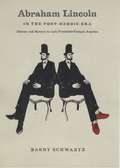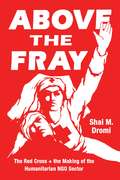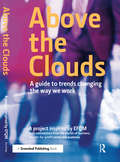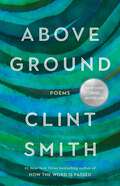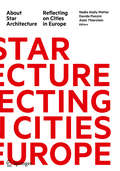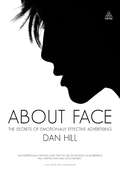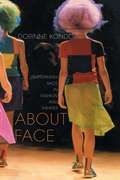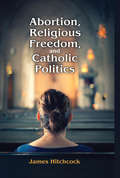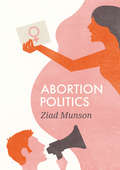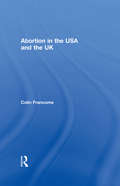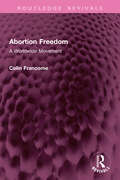- Table View
- List View
Abraham Lincoln in the Post-Heroic Era: History and Memory in Late Twentieth-Century America
by Barry SchwartzBy the 1920s, Abraham Lincoln had transcended the lingering controversies of the Civil War to become a secular saint, honored in North and South alike for his steadfast leadership in crisis. Throughout the Great Depression and World War II, Lincoln was invoked countless times as a reminder of America’s strength and wisdom, a commanding ideal against which weary citizens could see their own hardships in perspective. But as Barry Schwartz reveals in Abraham Lincoln in the Post-Heroic Era, those years represent the apogee of Lincoln’s prestige. The decades following World War II brought radical changes to American culture, changes that led to the diminishing of all heroes—Lincoln not least among them. As Schwartz explains, growing sympathy for the plight of racial minorities, disenchantment with the American state, the lessening of patriotism in the wake of the Vietnam War, and an intensifying celebration of diversity, all contributed to a culture in which neither Lincoln nor any single person could be a heroic symbol for all Americans. Paradoxically, however, the very culture that made Lincoln an object of indifference, questioning, criticism, and even ridicule was a culture of unprecedented beneficence and inclusion, where racial, ethnic, and religious groups treated one another more fairly and justly than ever before. Thus, as the prestige of the Great Emancipator shrank, his legacy of equality continued to flourish. Drawing on a stunning range of sources—including films, cartoons, advertisements, surveys, shrine visitations, public commemorations, and more—Schwartz documents the decline of Lincoln’s public standing, asking throughout whether there is any path back from this post-heroic era. Can a new generation of Americans embrace again their epic past, including great leaders whom they know to be flawed? As the 2009 Lincoln Bicentennial approaches, readers will discover here a stirring reminder that Lincoln, as a man, still has much to say to us—about our past, our present, and our possible futures.
Abraham Lincoln in the Post-Heroic Era: History and Memory in Late Twentieth-Century America
by Barry SchwartzBy the 1920s, Abraham Lincoln had transcended the lingering controversies of the Civil War to become a secular saint, honored in North and South alike for his steadfast leadership in crisis. Throughout the Great Depression and World War II, Lincoln was invoked countless times as a reminder of America’s strength and wisdom, a commanding ideal against which weary citizens could see their own hardships in perspective. But as Barry Schwartz reveals in Abraham Lincoln in the Post-Heroic Era, those years represent the apogee of Lincoln’s prestige. The decades following World War II brought radical changes to American culture, changes that led to the diminishing of all heroes—Lincoln not least among them. As Schwartz explains, growing sympathy for the plight of racial minorities, disenchantment with the American state, the lessening of patriotism in the wake of the Vietnam War, and an intensifying celebration of diversity, all contributed to a culture in which neither Lincoln nor any single person could be a heroic symbol for all Americans. Paradoxically, however, the very culture that made Lincoln an object of indifference, questioning, criticism, and even ridicule was a culture of unprecedented beneficence and inclusion, where racial, ethnic, and religious groups treated one another more fairly and justly than ever before. Thus, as the prestige of the Great Emancipator shrank, his legacy of equality continued to flourish. Drawing on a stunning range of sources—including films, cartoons, advertisements, surveys, shrine visitations, public commemorations, and more—Schwartz documents the decline of Lincoln’s public standing, asking throughout whether there is any path back from this post-heroic era. Can a new generation of Americans embrace again their epic past, including great leaders whom they know to be flawed? As the 2009 Lincoln Bicentennial approaches, readers will discover here a stirring reminder that Lincoln, as a man, still has much to say to us—about our past, our present, and our possible futures.
Abraham and the Secular: Fracture and Composition (Interreligious Studies in Theory and Practice)
by Simone Raudino Uzma Ashraf BartonThis volume offers both theoretical approaches and case studies on the relationship between religion and the secular world. Bringing together contributions from seasoned authors, religious leaders, and brilliant new scholars, it frames the long-standing debate on how to structure a comparative representation of any religion on the one side, and the secular world on the other. Often, the very act of comparing religions exposes them to an assessment of their role in history and politics, and risks leading to some sort of grading and ranking, which is highly unproductive. By candidly discussing the relation between religion and the secular and providing concrete examples from four case studies (Christianity, Islam, Judaism, Baha’I’), this book provides an important reference on how this can be achieved in a neutral way, while keeping in mind the normative finality of seeking conciliation to existing fractures, both within and among religions.
Above the Fray: The Red Cross and the Making of the Humanitarian NGO Sector
by Shai M. DromiFrom Lake Chad to Iraq, nongovernmental organizations (NGOs) provide relief around the globe, and their scope is growing every year. Policy makers and activists often assume that humanitarian aid is best provided by these organizations, which are generally seen as impartial and neutral. In Above the Fray, Shai M. Dromi investigates why the international community overwhelmingly trusts humanitarian NGOs by looking at the historical development of their culture. With a particular focus on the Red Cross, Dromi reveals that NGOs arose because of the efforts of orthodox Calvinists, demonstrating for the first time the origins of the unusual moral culture that has supported NGOs for the past 150 years. Drawing on archival research, Dromi traces the genesis of the Red Cross to a Calvinist movement working in mid-nineteenth-century Geneva. He shows how global humanitarian policies emerged from the Red Cross founding members’ faith that an international volunteer program not beholden to the state was the only ethical way to provide relief to victims of armed conflict. By illustrating how Calvinism shaped the humanitarian field, Dromi argues for the key role belief systems play in establishing social fields and institutions. Ultimately, Dromi shows the immeasurable social good that NGOs have achieved, but also points to their limitations and suggests that alternative models of humanitarian relief need to be considered.
Above the Fray: The Red Cross and the Making of the Humanitarian NGO Sector
by Shai M. DromiFrom Lake Chad to Iraq, nongovernmental organizations (NGOs) provide relief around the globe, and their scope is growing every year. Policy makers and activists often assume that humanitarian aid is best provided by these organizations, which are generally seen as impartial and neutral. In Above the Fray, Shai M. Dromi investigates why the international community overwhelmingly trusts humanitarian NGOs by looking at the historical development of their culture. With a particular focus on the Red Cross, Dromi reveals that NGOs arose because of the efforts of orthodox Calvinists, demonstrating for the first time the origins of the unusual moral culture that has supported NGOs for the past 150 years. Drawing on archival research, Dromi traces the genesis of the Red Cross to a Calvinist movement working in mid-nineteenth-century Geneva. He shows how global humanitarian policies emerged from the Red Cross founding members’ faith that an international volunteer program not beholden to the state was the only ethical way to provide relief to victims of armed conflict. By illustrating how Calvinism shaped the humanitarian field, Dromi argues for the key role belief systems play in establishing social fields and institutions. Ultimately, Dromi shows the immeasurable social good that NGOs have achieved, but also points to their limitations and suggests that alternative models of humanitarian relief need to be considered.
Above the Fray: The Red Cross and the Making of the Humanitarian NGO Sector
by Shai M. DromiFrom Lake Chad to Iraq, nongovernmental organizations (NGOs) provide relief around the globe, and their scope is growing every year. Policy makers and activists often assume that humanitarian aid is best provided by these organizations, which are generally seen as impartial and neutral. In Above the Fray, Shai M. Dromi investigates why the international community overwhelmingly trusts humanitarian NGOs by looking at the historical development of their culture. With a particular focus on the Red Cross, Dromi reveals that NGOs arose because of the efforts of orthodox Calvinists, demonstrating for the first time the origins of the unusual moral culture that has supported NGOs for the past 150 years. Drawing on archival research, Dromi traces the genesis of the Red Cross to a Calvinist movement working in mid-nineteenth-century Geneva. He shows how global humanitarian policies emerged from the Red Cross founding members’ faith that an international volunteer program not beholden to the state was the only ethical way to provide relief to victims of armed conflict. By illustrating how Calvinism shaped the humanitarian field, Dromi argues for the key role belief systems play in establishing social fields and institutions. Ultimately, Dromi shows the immeasurable social good that NGOs have achieved, but also points to their limitations and suggests that alternative models of humanitarian relief need to be considered.
Above the Fray: The Red Cross and the Making of the Humanitarian NGO Sector
by Shai M. DromiFrom Lake Chad to Iraq, nongovernmental organizations (NGOs) provide relief around the globe, and their scope is growing every year. Policy makers and activists often assume that humanitarian aid is best provided by these organizations, which are generally seen as impartial and neutral. In Above the Fray, Shai M. Dromi investigates why the international community overwhelmingly trusts humanitarian NGOs by looking at the historical development of their culture. With a particular focus on the Red Cross, Dromi reveals that NGOs arose because of the efforts of orthodox Calvinists, demonstrating for the first time the origins of the unusual moral culture that has supported NGOs for the past 150 years. Drawing on archival research, Dromi traces the genesis of the Red Cross to a Calvinist movement working in mid-nineteenth-century Geneva. He shows how global humanitarian policies emerged from the Red Cross founding members’ faith that an international volunteer program not beholden to the state was the only ethical way to provide relief to victims of armed conflict. By illustrating how Calvinism shaped the humanitarian field, Dromi argues for the key role belief systems play in establishing social fields and institutions. Ultimately, Dromi shows the immeasurable social good that NGOs have achieved, but also points to their limitations and suggests that alternative models of humanitarian relief need to be considered.
Above the Fray: The Red Cross and the Making of the Humanitarian NGO Sector
by Shai M. DromiFrom Lake Chad to Iraq, nongovernmental organizations (NGOs) provide relief around the globe, and their scope is growing every year. Policy makers and activists often assume that humanitarian aid is best provided by these organizations, which are generally seen as impartial and neutral. In Above the Fray, Shai M. Dromi investigates why the international community overwhelmingly trusts humanitarian NGOs by looking at the historical development of their culture. With a particular focus on the Red Cross, Dromi reveals that NGOs arose because of the efforts of orthodox Calvinists, demonstrating for the first time the origins of the unusual moral culture that has supported NGOs for the past 150 years. Drawing on archival research, Dromi traces the genesis of the Red Cross to a Calvinist movement working in mid-nineteenth-century Geneva. He shows how global humanitarian policies emerged from the Red Cross founding members’ faith that an international volunteer program not beholden to the state was the only ethical way to provide relief to victims of armed conflict. By illustrating how Calvinism shaped the humanitarian field, Dromi argues for the key role belief systems play in establishing social fields and institutions. Ultimately, Dromi shows the immeasurable social good that NGOs have achieved, but also points to their limitations and suggests that alternative models of humanitarian relief need to be considered.
Above the Fray: The Red Cross and the Making of the Humanitarian NGO Sector
by Shai M. DromiFrom Lake Chad to Iraq, nongovernmental organizations (NGOs) provide relief around the globe, and their scope is growing every year. Policy makers and activists often assume that humanitarian aid is best provided by these organizations, which are generally seen as impartial and neutral. In Above the Fray, Shai M. Dromi investigates why the international community overwhelmingly trusts humanitarian NGOs by looking at the historical development of their culture. With a particular focus on the Red Cross, Dromi reveals that NGOs arose because of the efforts of orthodox Calvinists, demonstrating for the first time the origins of the unusual moral culture that has supported NGOs for the past 150 years. Drawing on archival research, Dromi traces the genesis of the Red Cross to a Calvinist movement working in mid-nineteenth-century Geneva. He shows how global humanitarian policies emerged from the Red Cross founding members’ faith that an international volunteer program not beholden to the state was the only ethical way to provide relief to victims of armed conflict. By illustrating how Calvinism shaped the humanitarian field, Dromi argues for the key role belief systems play in establishing social fields and institutions. Ultimately, Dromi shows the immeasurable social good that NGOs have achieved, but also points to their limitations and suggests that alternative models of humanitarian relief need to be considered.
Above the Clouds: A Guide to Trends Changing the Way we Work
by EfqmSome of us work to live. Some of us live to work. Some of us, by design or default, don't work at all. Whatever your position, as a stakeholder in today's society, there is no avoiding the complex web that is the world of work. Everyone is affected to some degree by issues such as stress and work-life balance, teleworking, offshoring, stakeholder democracy, globalisation – the list goes on. But, as things continue to change at an ever-faster rate, what can we expect work to look like in the next five, ten, or twenty years? Above the Clouds is the result of a future studies project carried out by the European Foundation for Quality Management (EFQM), a not-for profit foundation that promotes excellence in European business. The project aimed to identify trends that will have an impact on the world of work over the coming decade. Work here is defined in terms of methods, organisation and future challenges. It took two years to create the full picture, which is now available in this book. "Trendspotting" sessions were organised across Europe as a means of gathering ideas on where work was heading in the future. The experience and insights of people from a diverse range of backgrounds were included in the project. Working with raw material from these sessions, researchers investigated each of the trends and their possible ramifications on the world of work. The resulting articles were posted for comment online. People from all around Europe responded and some of these views are quoted in this book. In addition, academics and leading CEOs and executives were asked for their reactions to these trends. Each of the 15 chapters of Above the Clouds analyses a trend in detail and includes perspectives from business, academia and comments from the European public. There are disagreements, but also a surprising amount of convergence on issues such as leadership, outsourcing, global risk, women, age, spirituality, stress and technology. Rather than trying to offer certainty, the book aims to equip people and organisations with the awareness and adaptability they will need to meet tomorrow's challenges to the way we work. It is fascinating reading for anyone interested in how the big issues of work are likely to impact on us all.
Above the Clouds: A Guide to Trends Changing the Way we Work
by EfqmSome of us work to live. Some of us live to work. Some of us, by design or default, don't work at all. Whatever your position, as a stakeholder in today's society, there is no avoiding the complex web that is the world of work. Everyone is affected to some degree by issues such as stress and work-life balance, teleworking, offshoring, stakeholder democracy, globalisation – the list goes on. But, as things continue to change at an ever-faster rate, what can we expect work to look like in the next five, ten, or twenty years? Above the Clouds is the result of a future studies project carried out by the European Foundation for Quality Management (EFQM), a not-for profit foundation that promotes excellence in European business. The project aimed to identify trends that will have an impact on the world of work over the coming decade. Work here is defined in terms of methods, organisation and future challenges. It took two years to create the full picture, which is now available in this book. "Trendspotting" sessions were organised across Europe as a means of gathering ideas on where work was heading in the future. The experience and insights of people from a diverse range of backgrounds were included in the project. Working with raw material from these sessions, researchers investigated each of the trends and their possible ramifications on the world of work. The resulting articles were posted for comment online. People from all around Europe responded and some of these views are quoted in this book. In addition, academics and leading CEOs and executives were asked for their reactions to these trends. Each of the 15 chapters of Above the Clouds analyses a trend in detail and includes perspectives from business, academia and comments from the European public. There are disagreements, but also a surprising amount of convergence on issues such as leadership, outsourcing, global risk, women, age, spirituality, stress and technology. Rather than trying to offer certainty, the book aims to equip people and organisations with the awareness and adaptability they will need to meet tomorrow's challenges to the way we work. It is fascinating reading for anyone interested in how the big issues of work are likely to impact on us all.
Above Ground
by Clint SmithA remarkable poetry collection with "inextinguishable generosity and abundant wisdom" (Monica Youn) from Clint Smith, the #1 New York Times bestselling and National Book Critics Circle award-winning author of How the Word Is Passed. Clint Smith&’s vibrant and compelling new collection traverses the vast emotional terrain of fatherhood, and explores how becoming a parent has recalibrated his sense of the world. There are poems that interrogate the ways our lives are shaped by both personal lineages and historical institutions. There are poems that revel in the wonder of discovering the world anew through the eyes of your children, as they discover it for the first time. There are poems that meditate on what it means to raise a family in a world filled with constant social and political tumult. Above Ground wrestles with how we hold wonder and despair in the same hands, how we carry intimate moments of joy and a collective sense of mourning in the same body. Smith&’s lyrical, narrative poems bring the reader on a journey not only through the early years of his children&’s lives, but through the changing world in which they are growing up—through the changing world of which we are all a part.Above Ground is a breathtaking collection that follows Smith's first award-winning book of poetry, Counting Descent.
About Star Architecture: Reflecting on Cities in Europe
by Davide Ponzini Alain Thierstein Nadia Alaily-MattarCities across the world have been resorting to star architects to brand their projects, spark urban regeneration and market the city image internationally. This book shifts the attention from star architects to star architecture, arguing that the process of deciding about and implementing relevant architectural and urban projects is not the product of any single actor. Star architecture can, in fact, be better studied and understood as assembled by multiple actors and in its relationship with urban transformation. In its 18 chapters, the book presents a multidisciplinary collection of expert contributions in the fields of urban planning, architecture, media studies, urban economics, geography, and sociology, consistently brought together for the first time to deal with this topic. Through a vast array of case studies and analytical techniques touching over 20 cities in Europe, the book shows the positive and more problematic impacts of star architecture with reference to the preservation of built heritage, tourism and media. The book will be of interest to architects, sociologists, urban planners, and public administrators.
About Face: The Secrets of Emotionally Effective Advertising
by Dan HillOnce advertising was all about being 'on-message' and getting talking points right. But breakthroughs in brain science have confirmed what we all know but don't often admit to in business: people are primarily emotional decision-makers. From podcasting, blogs and forums to interactive ads in stations, the heart of the matter is now the consumer's experience as opposed to the company's marketing message. About Face shows how 21st century advertising can realize success by being 'on-emotion' first and foremost. Using data from eye tracking and facial coding to analyse consumer responses, About Face demonstrates exactly which advertising strategies are successful and why. Moving beyond the old Ps of product, price, place and promotion, Dan Hill outlines ten rules for emotionally effective advertising including simplicity, familiarity, relevancy and believability.Emotions rule decision making. About Face shows you that by focussing on the three new Ps of passion, purpose and personality, your campaigns can become more effective and emotionally engaging, taking you closer to the consumer.
About Face: The Secrets of Emotionally Effective Advertising
by Dan HillOnce advertising was all about being 'on-message' and getting talking points right. But breakthroughs in brain science have confirmed what we all know but don't often admit to in business: people are primarily emotional decision-makers. From podcasting, blogs and forums to interactive ads in stations, the heart of the matter is now the consumer's experience as opposed to the company's marketing message. About Face shows how 21st century advertising can realize success by being 'on-emotion' first and foremost. Using data from eye tracking and facial coding to analyse consumer responses, About Face demonstrates exactly which advertising strategies are successful and why. Moving beyond the old Ps of product, price, place and promotion, Dan Hill outlines ten rules for emotionally effective advertising including simplicity, familiarity, relevancy and believability.Emotions rule decision making. About Face shows you that by focussing on the three new Ps of passion, purpose and personality, your campaigns can become more effective and emotionally engaging, taking you closer to the consumer.
About Face: Performing Race in Fashion and Theater
by Dorinne KondoFrom the runways of Paris to the casting controversies over BMiss Saigon, from a local demonstration at the Claremont Colleges in California to the gender-blending of BM. Butterfly, BAbout Face examines representations of Asia and their reverberations in both Asia and Asian American lives. Japanese high fashion and Asian American theater become points of entry into the politics of pleasure, the performance of racial identities, and the possibility of political intervention in commodity capitalism. Based on Kondo's fieldwork, this interdisciplinary work brings together essays, interviews with designer Rei Kawakubo of Comme des Garcons and playwright David Henry Hwang, and "personal" vignettes in its exploration of counter-Orientalisms.
About Face: Performing Race in Fashion and Theater
by Dorinne KondoFrom the runways of Paris to the casting controversies over BMiss Saigon, from a local demonstration at the Claremont Colleges in California to the gender-blending of BM. Butterfly, BAbout Face examines representations of Asia and their reverberations in both Asia and Asian American lives. Japanese high fashion and Asian American theater become points of entry into the politics of pleasure, the performance of racial identities, and the possibility of political intervention in commodity capitalism. Based on Kondo's fieldwork, this interdisciplinary work brings together essays, interviews with designer Rei Kawakubo of Comme des Garcons and playwright David Henry Hwang, and "personal" vignettes in its exploration of counter-Orientalisms.
Abortion, Religious Freedom, and Catholic Politics
by James HitchcockThroughout its history the Catholic Church has taken positions on many subjects that are in one sense political, but in another sense are primarily moral, such as contraception, homosexuality, and divorce. One such issue, abortion, has split not only the United States, but Catholics as well. Catholics had to confront these issues within the framework of a democratic society that had no official religion. Abortion, Religious Freedom, and Catholic Politics is a study of opposing American Catholic approaches to abortion, especially in terms of laws and government policies. After the ruling of Roe vs. Wade, many pro-life advocates no longer felt their sentiments and moral code aligned with Democrats. For the first time, Catholics, as an entire group, became involved in U.S. politics. Abortion became one of the principal points of division in American Catholicism: a widening split between liberal Catholic Democrats who sought to minimize the issue and other Catholics, many of them politically liberal, whose pro-life commitments caused them to support Republicans. James Hitchcock discusses the 2016 presidential campaign and how it altered an already changed political landscape. He also examines the Affordable Care Act, LGBT rights, and the questions they raise about religious liberty.
Abortion, Religious Freedom, and Catholic Politics
by James HitchcockThroughout its history the Catholic Church has taken positions on many subjects that are in one sense political, but in another sense are primarily moral, such as contraception, homosexuality, and divorce. One such issue, abortion, has split not only the United States, but Catholics as well. Catholics had to confront these issues within the framework of a democratic society that had no official religion. Abortion, Religious Freedom, and Catholic Politics is a study of opposing American Catholic approaches to abortion, especially in terms of laws and government policies. After the ruling of Roe vs. Wade, many pro-life advocates no longer felt their sentiments and moral code aligned with Democrats. For the first time, Catholics, as an entire group, became involved in U.S. politics. Abortion became one of the principal points of division in American Catholicism: a widening split between liberal Catholic Democrats who sought to minimize the issue and other Catholics, many of them politically liberal, whose pro-life commitments caused them to support Republicans. James Hitchcock discusses the 2016 presidential campaign and how it altered an already changed political landscape. He also examines the Affordable Care Act, LGBT rights, and the questions they raise about religious liberty.
Abortion Politics (Social Movements)
by Ziad MunsonAbortion has remained one of the most volatile and polarizing issues in the United States for over four decades. Americans are more divided today than ever over abortion, and this debate colors the political, economic, and social dynamics of the country. This book provides a balanced, clear-eyed overview of the abortion debate, including the perspectives of both the pro-life and pro-choice movements. It covers the history of the debate from colonial times to the present, the mobilization of mass movements around the issue, the ways it is understood by ordinary Americans, the impact it has had on US political development, and the differences between the abortion conflict in the US and the rest of the world. Throughout these discussions, Ziad Munson demonstrates how the meaning of abortion has shifted to reflect the changing anxieties and cultural divides which it has come to represent.Abortion Politics is an invaluable companion for exploring the abortion issue and what it has to say about American society, as well as the dramatic changes in public understanding of women’s rights, medicine, religion, and partisanship.
Abortion in the USA and the UK
by Colin FrancomeRecent years have revealed the different experiences of abortion in the UK and the USA. The United States has a higher abortion rate accompanied by a higher political profile for the issue. In fact, one of George W. Bush's first acts in 2001 was to ban American funding for overseas organizations carrying out abortions. The USA has also experienced a higher degree of abortion-related violence, with several people linked to abortion services being targeted and even killed. Compelling and enlightening in its approach, this invigorating volume compares the two countries' abortion laws and outlines the distinctions. The usually conservative American society has a much more liberal abortion law than the United Kingdom, whose female citizens can obtain an abortion relatively easily although in fact they do not have the right to choose. This stimulating volume examines the comparative positions taken by each country and makes important suggestions for the future.
Abortion in the USA and the UK
by Colin FrancomeRecent years have revealed the different experiences of abortion in the UK and the USA. The United States has a higher abortion rate accompanied by a higher political profile for the issue. In fact, one of George W. Bush's first acts in 2001 was to ban American funding for overseas organizations carrying out abortions. The USA has also experienced a higher degree of abortion-related violence, with several people linked to abortion services being targeted and even killed. Compelling and enlightening in its approach, this invigorating volume compares the two countries' abortion laws and outlines the distinctions. The usually conservative American society has a much more liberal abortion law than the United Kingdom, whose female citizens can obtain an abortion relatively easily although in fact they do not have the right to choose. This stimulating volume examines the comparative positions taken by each country and makes important suggestions for the future.
Abortion Freedom: A Worldwide Movement (Routledge Revivals)
by Colin FrancomeFirst published in 1984, Abortion Freedom explains the main reasons for widespread international liberalisation of abortion laws. Colin Francome points out that the birth control movement had its roots in a concern with overpopulation and that this is still a crucial issue today. A major change, however, is that whereas in the early days the socialists were often opposed to birth control they are now amongst the keenest supporters of the woman’s right to choose. The author pays particular attention to the debates in the United States, France and Italy. It is aimed primarily at students of politics, sociology and law but it has a much wider appeal to the general public as a readable explanation of the ideas and strategies of the opposing forces involved.
Abortion Freedom: A Worldwide Movement (Routledge Revivals)
by Colin FrancomeFirst published in 1984, Abortion Freedom explains the main reasons for widespread international liberalisation of abortion laws. Colin Francome points out that the birth control movement had its roots in a concern with overpopulation and that this is still a crucial issue today. A major change, however, is that whereas in the early days the socialists were often opposed to birth control they are now amongst the keenest supporters of the woman’s right to choose. The author pays particular attention to the debates in the United States, France and Italy. It is aimed primarily at students of politics, sociology and law but it has a much wider appeal to the general public as a readable explanation of the ideas and strategies of the opposing forces involved.
The Abortion Debate in the World Arena
by A. KulczyckiAbortion is a woman's health concern and a complex moral dilemma everywhere. It is now also one of the most intractable social and political problems of our time. This book provides the first account of the abortion controversy globally. It examines how this issue is being played out beyond the established western liberal democracies and how the Catholic Church and other groups engage it worldwide. The questions addressed in this scholarly and readable work are of paramount significance for the future management of this dispute.
